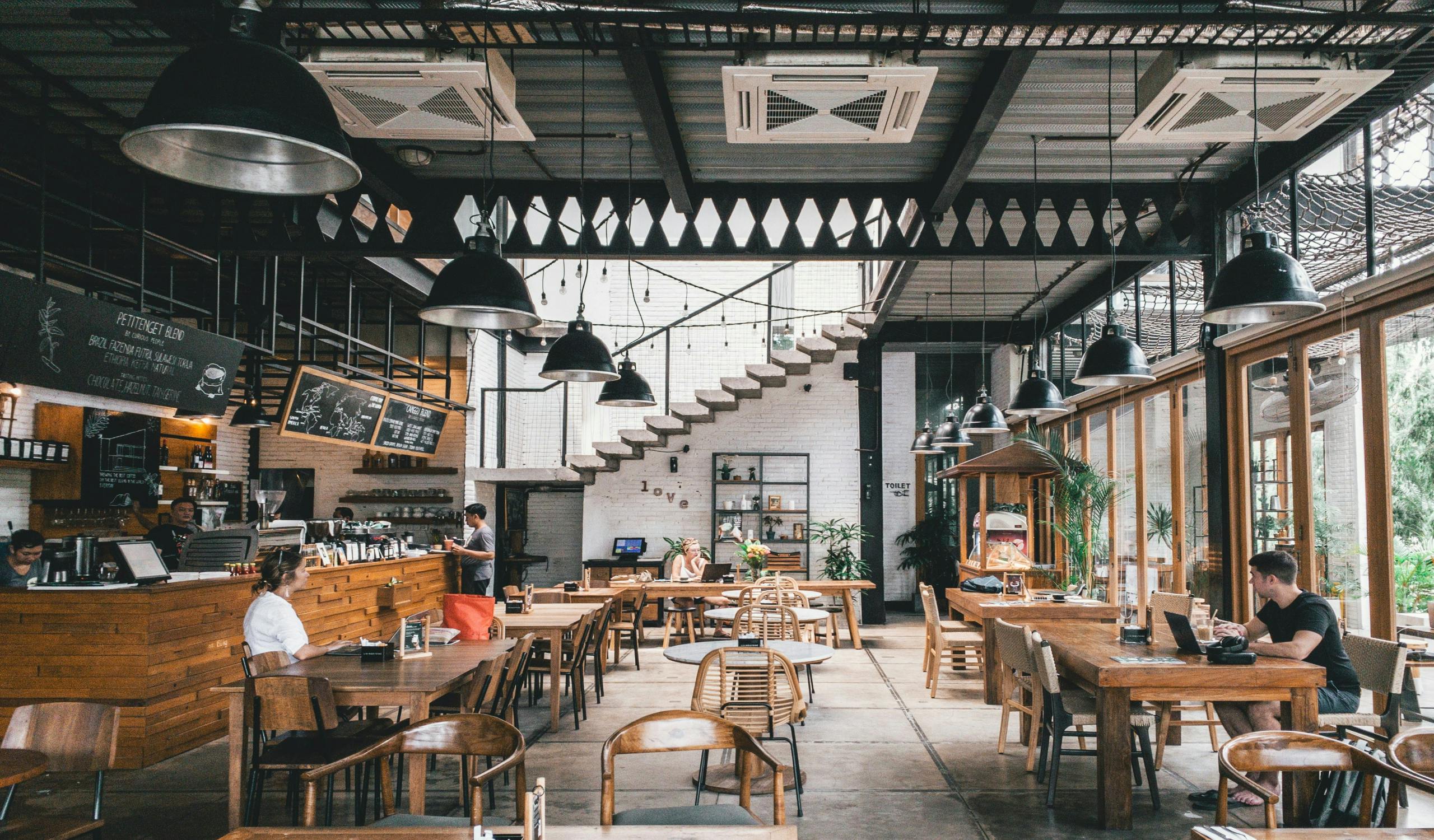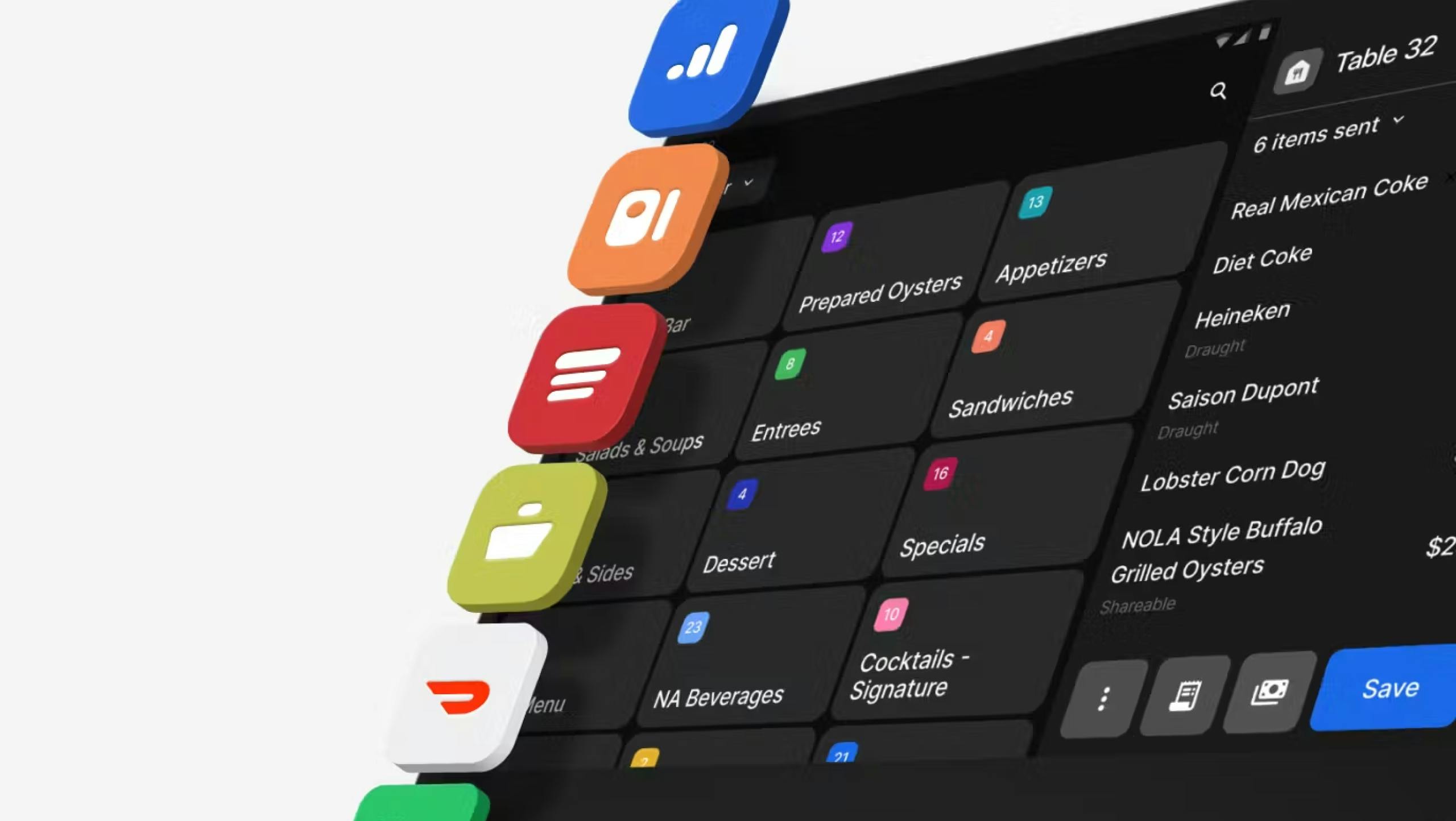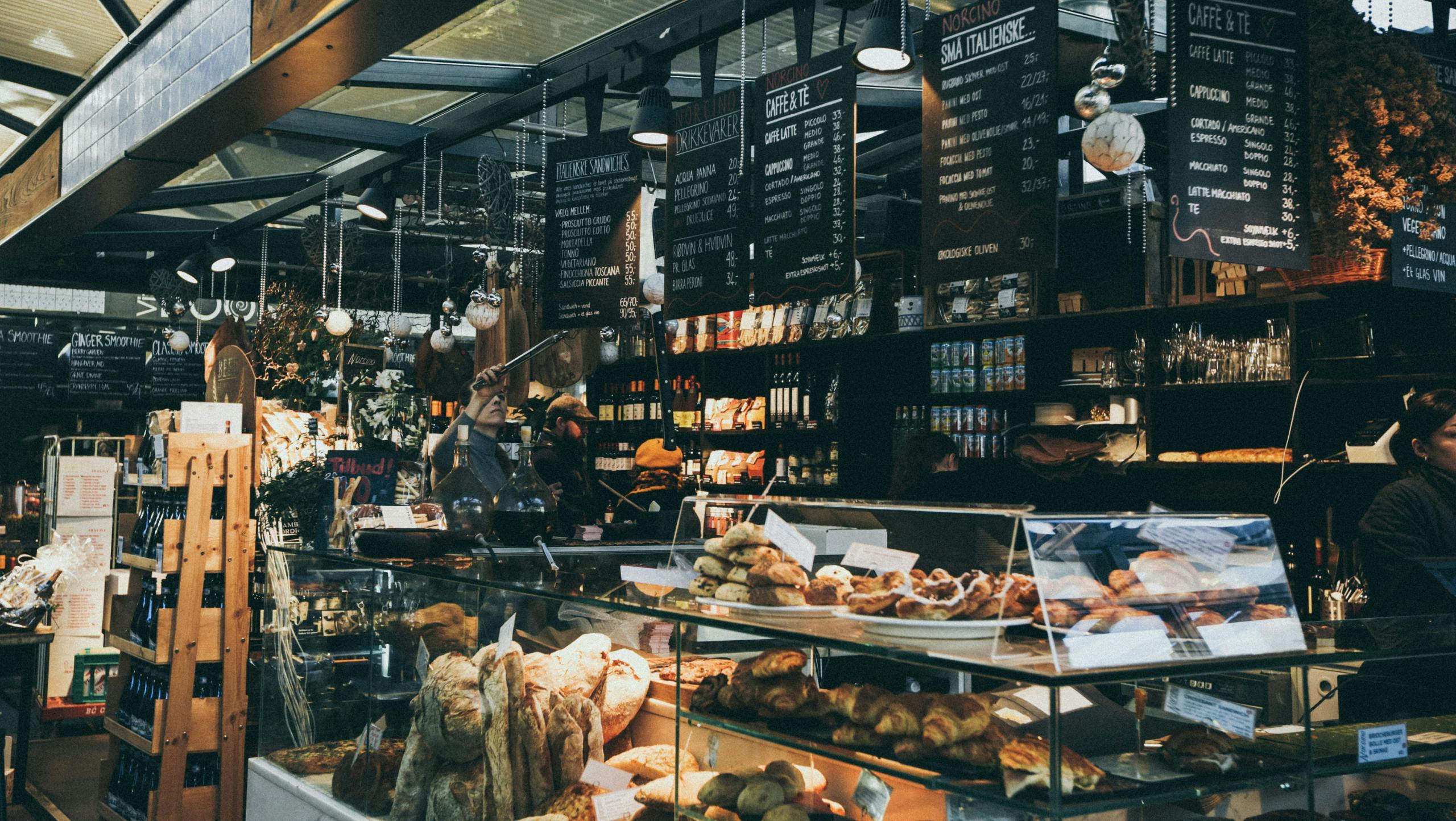
Restaurant inflation: how rising costs are impacting the industry
Table of contents
Skyrocketing costs and Trump administration’s tariffs are forcing most restaurants to reinvent nearly every aspect of their operations in 2025. Menu prices have risen 27.2% since 2019 according to the U.S. Bureau of Labor Statistics, and Civic Data found in its Q3 2024 report that 55% of U.S. adults are spending less on eating out. From menu design and staffing models to pricing strategies and loyalty programs, restaurant owners and franchises are looking for ways to mitigate the rising costs.
How do you, as a business owner, manage escalating costs across food, labor, rent, and utilities while addressing the drastic change in consumer behavior? In this article, we’ll answer your pressing questions by exploring:
- Inflation's impact on restaurant profitability
- Effective response strategies
- Technology solutions that can help businesses thrive
Don’t let ongoing cost pressures crumble your business. Whether you’re running an independent eatery, a franchise, or a coffee shop, there are ways to navigate the turmoil. Through menu engineering, dynamic pricing, and a whole lot more, Otter’s guide will help you navigate the waves of restaurant price inflation in 2025.

The real effect on restaurant operations and profits
If you think inflation leads to simple price increases, think again. The current economic landscape is fundamentally altering operational dynamics and reshaping customer relationships. Here’s what we’re seeing:
Thinning profit margins
Profit margins are already thin for this industry, and restaurant owners today are caught in a difficult price balancing act. While costs for ingredients, labor, and utilities continue rising, not all customers understand the coincidental increase in food prices. This type of compression leads to tough decisions about menu offerings, staffing levels, operating hours, and portion sizes. To adapt, restaurants are incorporating the following:
- Menu adjustments: Operators are removing high-cost or low-margin items, and simplifying dishes to reduce waste and preparation time
- Staffing changes: Owners are cross-training staff and tightening schedules to optimize efficiency
- Decreased hours: Some establishments are shortening operating hours to cut labor and utility expenses
Shifting consumer behavior
Money sensitivity has become a dominant factor in dining decisions. Price is now, more than ever, a top consideration for diners when choosing where to eat. Heightened cost consciousness is changing the way people dine out and order.
- 36% of respondents to a Revenue Management Solutions survey said they plan to dine out less in 2025
- The same study revealed that 79% of diners are more likely to return to their preferred quick-service restaurant instead of trying somewhere new
- According to Push Operations, more consumers are seeking bundled deals and loyalty programs to get more value for their money
- Push Operations also found that 53.1% of consumers feel fast food prices are unfair
Restaurant adaptations
Raising prices without losing customers is a delicate task. Restaurant owners are employing all kinds of strategies, from combo meals to portion control. Others are emphasizing high-quality ingredients or an unwavering commitment to sustainability to justify higher prices and enhance their perceived value.
Some of the most effective solutions lie in leveraging technology. Tools like AI-driven pricing models, predictive analytics for inventory management, and labor automation can help streamline operations and improve profitability. We will explore this idea in more detail in the next section.

Tips for restaurants responding to inflation
In December 2024, restaurant chain Chipotle raised national menu prices by 2% to offset rising costs for ingredients essential to their meals, including beef, dairy, and avocados. To justify the increase to customers, Chipotle focused on their generous portion sizes, proving to restaurants all over the country that rising costs does not mean bankruptcy.
Let us help you navigate today’s inflationary economy. Here is a list of tangible ways today’s restaurants are managing rising costs and supply chain disruptions.
Menu engineering tactics
Large and small restaurant owners are reimagining menus to uphold current margins without alienating price-conscious diners.
- Reducing SKUs: By eliminating underperforming or high-cost items, it’s possible to reduce food waste and labor costs while keeping a focus on the most profitable dishes (smaller yet delicious menus for the win!)
- Ingredient substitutions: Replacing expensive imported ingredients with quality domestic alternatives maintains the menu’s integrity at significantly lower prices
- Strategic pricing: Implementing incremental price increases on high-margin items minimizes customer resistance while protecting the bottom line
Portion control strategies
Portion adjustments can help manage costs, but restaurants must be careful with implementation. Lightspeed’s 2024 State of Hospitality report found that 40% of diners have noticed "shrinkflation" and many are not happy about it. To ensure subtlety, here are a few strategies to use:
- Smaller plates or standardized portion scoops that create consistent serving sizes
- Introduce portion changes in a positive way to staff, emphasizing quality, sustainability, or reduced waste
- Offer tiered portion options so customers have a choice in dish size while optimizing food costs
Technology solutions
Forward-thinking restaurants are leveraging technology to navigate inflation and seeing positive results.
- AI-powered analytics: Using artificial intelligence to optimize marketing promotions, menus, pricing, and inventory based on actual sales data and trends
- Labor automation: Implementing self-service kiosks and automated scheduling tools to manage rising labor costs while improving service
- Predictive forecasting: Employing advanced and unified analytics to anticipate customer demand patterns, optimize staffing, decrease downtime, and save money
Dynamic operating systems
A restaurant operating system, like Otter POS, already has the essential tools you need for inflation management.
- Pricing controls: Adjust menu prices in just a few clicks––across all locations and channels––based on demand patterns to ensure profit during peak times and offer strategic discounts during slower periods
- Integrated marketing: Targeted promotional campaigns on top delivery apps help restaurants attract customers across multiple channels without relying on broad discounts
- Real-time menu updates: Instantly update menu items across channels and delivery platforms to quickly respond to changing ingredient costs or customer preferences
Restaurants weathering inflation with success are embracing these multi-faceted approaches. By combining thoughtful menu engineering, careful portion management, and strategic technology adoption, they’re able to maintain profitability while continuing to deliver value to customers.

Using AI to stay profitable in an inflationary environment
AI technology has emerged as a critical tool for restaurants battling inflation. The good news is AI is now accessible to businesses of all sizes through platforms like Otter Marketing.
Key AI solutions for restaurants
- Predictive pricing & menu optimization: AI analyzes sales data and customer behavior to identify optimal price points and menu combinations that maintain profitability without sacrificing customer satisfaction. Otter's menu optimization features help restaurants identify their most profitable items while preserving value perception.
- Smart inventory & order management: Intelligent systems predict ingredient needs based on historical patterns and demand forecasts. This reduces waste and over-ordering and directly addresses food costs, one of the most inflation-sensitive expenses. Otter's order management system helps restaurants optimize purchasing and inventory control.
- Automated marketing & loyalty: AI identifies customer preferences to create targeted promotions that drive repeat business without broad discounts. Otter's loyalty tool enables personalized marketing that increases average check size while enhancing customer experience.
- Labor optimization: With labor costs rising, AI scheduling tools match staffing precisely to anticipated demand, eliminating costly overstaffing while ensuring proper coverage when needed. These systems help control restaurants' second-largest expense category.
Today's restaurant AI solutions feature user-friendly interfaces that don't require technical expertise, making powerful inflation-fighting tools accessible to independent restaurants and small chains. Through platforms like Otter, all restaurants have access to tools that help maintain profitability despite the current economic climate.

How tariffs are amplifying restaurant inflation in 2025
It’s no secret that recent tariff impositions are intensifying an already-challenging economic environment. At the time of writing, trade policies have added a 10% baseline on imports from most countries, with rates exceeding 125% on goods from China. For an industry operating on thin profit margins, these tariffs represent a significant crunch on top of existing inflation.
The effect of tariffs on the restaurant industry
Restaurants are particularly vulnerable to tariff-related cost increases in several key areas:
- Food imports and specialty ingredients: The U.S. is dependent on imports for coffee, cheeses, spices, seafood, oils, and wine. Fresh produce costs alone are projected to rise by 4%.
- Equipment and supplies: Food isn’t the only item in the kitchen affected by trade relations. Tariffs on aluminum and steel are increasing costs for kitchen equipment, utensils, and packaging materials, creating additional expense categories beyond just food.
Beyond price increases, the tariffs immediately disrupted supply chains. As a result, restaurant owners are seeing shortages in critical ingredients, complicating menu planning and inventory management.
Strategic restaurant responses to tariff pressures
Despite the current touch-and-go nature of the tariff situation, restaurants are working to implement tariff-specific strategies alongside their broader inflation responses.
- Supplier diversification: Reducing dependency on heavily tariffed regions like China or the European Union by cultivating relationships with domestic producers.
- Contract negotiation: Securing bulk purchasing agreements or locking in prices before tariffs take full effect to hedge against future volatility.
- Menu engineering with tariffs in mind: Redesigning menus to highlight dishes less affected by tariffs, reformulating recipes with domestic alternatives, and using bundling to protect margins.
Addressing tariffs and inflation as interconnected challenges can help ease the blow. Restaurant owners are now incorporating tariff considerations into their broader inflation response strategy, hoping to maintain profitability while still delivering value.

What the future holds for restaurants amid ongoing inflation
The restaurant industry is an adaptive one, and everyone from upscale dining to food trucks are navigating themselves with grace through 2025’s inflationary ups and downs. While price increases are moderating compared to these last years, the cumulative impact and evolving consumer behaviors are transforming the dining landscape.
Evolving cost landscape
Here’s what we know: the severe price hikes of 2022-2023 appear to be easing, with full-service restaurant menu prices projected to rise by 3.6% in 2025. This is a significantly more manageable rate than previous years.
However, underlying pressures continue to remain consistent across multiple expense categories. To offset food costs like outlandish egg prices, labor, rent, utilities, and debt service, there has been a 27.2% cumulative increase on menu prices since 2019. Restaurants must maintain their focus on operational efficiency and strategic pricing in order to prevail.
Changing consumer expectations
With higher menu prices, consumers are cutting back on dining out in favor of bulking up at grocery stores and eating in. Those that do eat out are prioritizing deals and loyalty programs more than ever. Instead of giving up, successful restaurants are responding by developing "value narratives" that help customers understand why their dining experience justifies the cost. Through newsletters and social media, restaurants are showcasing their portion sizes, ingredient quality, unique offerings, or exceptional service to encourage traditional in-house dining.
Innovation driving forward
The most resilient restaurants are also embracing adaptation through technology. By implementing AI-driven solutions and self-service kiosks, it's possible to optimize pricing, inventory, staffing, and marketing strategies for higher profits. Some are developing hybrid models that combine dine-in, takeout, retail products, and virtual restaurant concepts. Tiered pricing options, bundling, and enhanced loyalty programs are also proving to be resilient methods in today’s fluctuating economic climate.
Looking ahead
While inflationary pressures will likely persist through 2025, they may stabilize at more moderate levels than the turbulent post-pandemic period. Restaurants that embrace technology, operational efficiency, and transparent customer communication will be best positioned to overcome this evolving environment.
For diners, even though the future likely holds continued menu price increases, there will also be an increase in value-conscious options. This means better quality ingredients, more unique experiences, and a focus on convenience. Opportunities for innovation are growing, giving restaurants a rare chance to differentiate themselves from the pack despite rising costs.
Book a demo with Otter
It’s time to enhance your operations with Otter’s all-in-one restaurant platform. Book time with our sales team to learn more.








